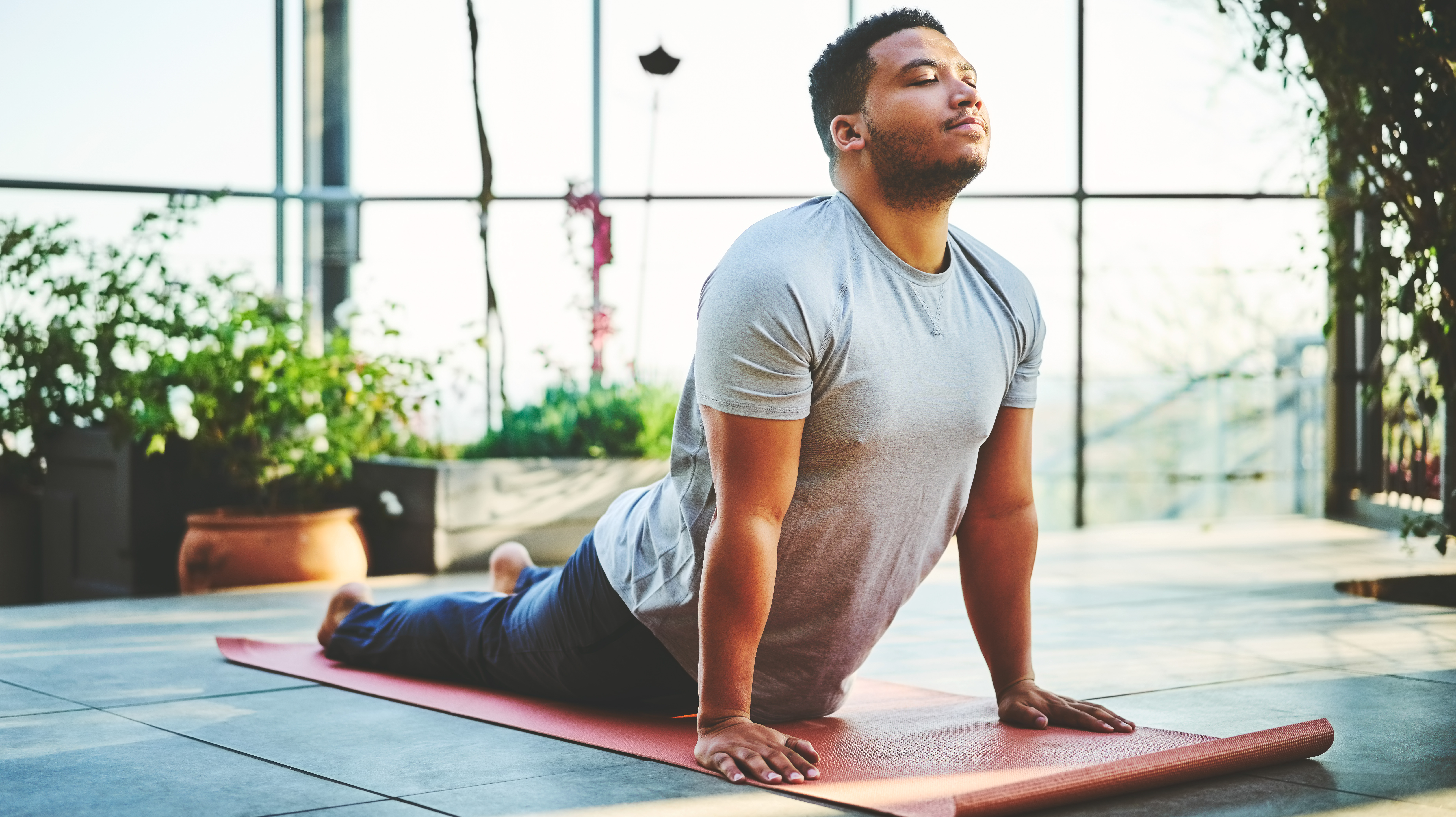
There are many reasons why people turn to yoga to keep their bodies feeling healthy. It's one of the best forms of exercise for improving mobility and supporting mental wellbeing. It can help you feel limber after a long day at the desk and reduce stress levels, too.
Laura Childs, a yoga instructor and founder of London-based Sāmya Studios recommends a traditional yoga flow that everyone should incorporate into their week.
"The first thing I recommend to anyone getting into yoga is learning a sun salutation," Childs says.
If you’re unfamiliar with sun salutation, it's a sequence of 12 traditional yoga poses (or asanas) performed as a flow and typically done in the morning. While common in yoga classes, each school or lineage of yoga may have its variations but all are designed to energize both the body and mind,
How to do a sun salutation
Below is some step-by-step guidance on how to do each pose in a sun salutation. If you need more of a visual guide, watch the video from certified yoga teacher Charlie Follows.
Mountain pose
- Begin standing with your feet together or hip-width apart, arms by your sides.
- Bring your hands together in front of your chest, palms touching.
- Ensure your weight is distributed evenly on both feet and shoulders down away from the ears.
Back bend
- Inhale deeply, raising your arms overhead as you lift your chest.
- Gaze at your hands with a gentle arch in your back. Palms can be facing up or together in prayer.
Forward fold
- Exhale, fold forward from your hips, bringing your hands towards the floor.
- Let your head hang, relaxing your neck and shoulders.
- Keep a bend in your knees to support your lower back if you need.
Halfway lift
- Inhale, lifting your torso so that your spine is straight and back parallel with the floor.
- Rest your hands on your thighs, shins or toes and look forward.
Plank pose
- Exhale, plant your hands on the floor and step one leg at a time back into a high plank position, with your wrists under your shoulders.
- Engage your core to form a straight line from your head to your heels.
Low plank
- Exhale, lower your knees to the floor (or keep them lifted if you're more advanced).
- Bend your elbows close to your sides to lower your chest to the mat.
Cobra or upward facing dog
- Inhale, press through your hands to lift your chest.
- To perform cobra, keep your elbows bent slightly and hands on the floor, so there's a gentle bend in your spine. Your belly should remain in contact with the mat.
- To perform upward dog, keep your arms straight so your chest and belly are pushed off the mat.
Downward-facing dog
- Exhale, press through your hands, lifting your hips upward, keeping your spine flat and long. Your body should now form an inverted 'V' shape.
- Keep your feet hip-width apart, heels pressing towards the ground and hold for one breath. For more tips on how to get comfortable with this pose, read our piece on how to do downward dog.
Halfway lift
- Inhale, step one leg at a time forward in between your hands.
- Lift your torso to straighten your spine again.
- Rest your hands on your thighs, shins or toes and look forward.
Forward fold
- Exhale, fold forward from your hips, bringing your hands towards the floor.
- Let your head hang, relaxing your neck and shoulders.
- Keep a bend in your knees to support your lower back if you need.
Backbend
- Inhale, sweeping your arms up overhead and standing, leaning back slightly for a gentle backbend.
Mountain pose
- Exhale, lower your arms to prayer position.
- Stand tall with weight distributed evenly on both feet.
- Take a breath in and out and repeat the sequence.
How many sun salutations should I do?
Childs says there's no set number of sun salutations you should aim for. Instead, you should prioritize doing what feels good.
If you wish to have a target, Childs recommends working up to eight sun salutations. "Eight is a sacred number in yoga, so I'd recommend doing salutations in increments of eight," she says.
That might all sound like a lot but once you’ve learnt the routine, you should be able to flow through each round in less than a minute.
When should I do sun salutations?
You can do sun salutations at any time of day. Traditionally they’re performed in the morning to greet the sun, hence the name.
Doing sun salutations is a great way to start the day, as the sequence strengthens and stretches the entire body and fosters mindfulness. However, it also works as a quick break from your desk or gentle evening movement
What are the benefits of sun salutations?
The sun salutation is made up of movements that engage all the muscles while mobilizing joints. "A sun salutation activates all parts of the body," Childs says.
"You'll strengthen through the side body and move through exercises like lunges and forward fold that mobilizes the hips," Childs says.
Plus, once you’ve mastered the sun salutation flow, moving quickly will raise your heart rate, providing a cardiovascular boost too. And one of the many benefits of yoga practices like this is that it can clear and calm the mind.
Shop yoga mats
You'll need something soft and supportive underneath you when performing sun salutations. The below options are taken directly from our round-up of the best yoga mats.
Once you have your mat, you can use it to perform beginner yoga stretches or learn how to do a pigeon pose to open up stiff hips.







